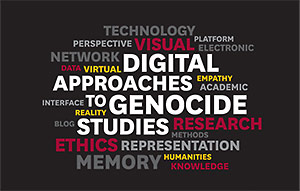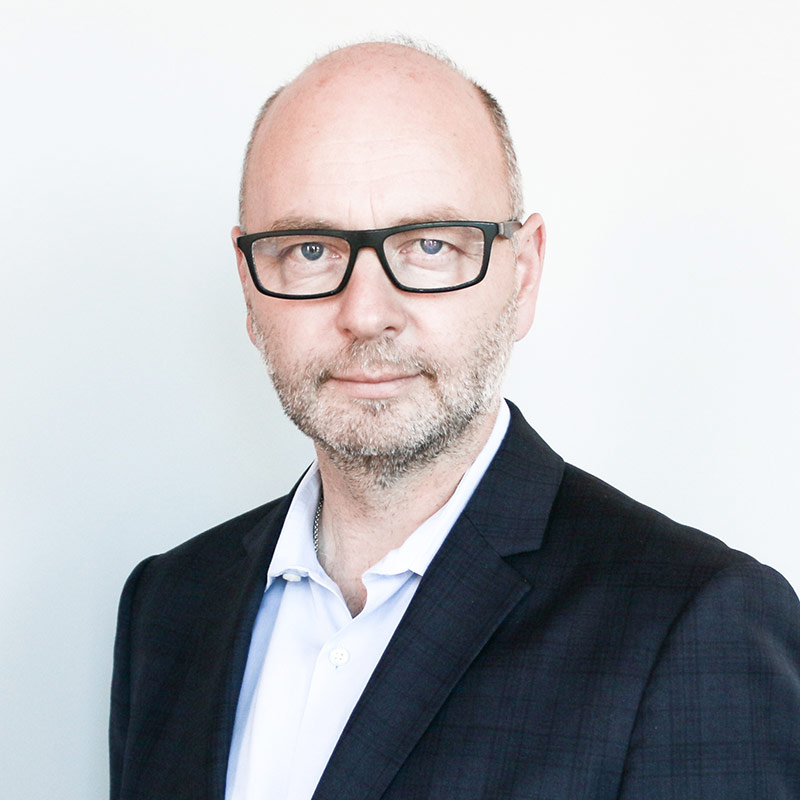A Digital Genocide Archive for the Future

If ever there was a research vision for USC Shoah Foundation Visual History Archive, it would be that scholars from around the world, including those from a wide range of disciplines use the testimonies as a source among many that they utilize daily in their research. Put another way, we don't want the archive to be seen as a stand-alone source, but one which is deeply integrated into the academic community as a seamless online research library.
As I write today and reflect on all the scholars I’ve met over this past fall season, including their deeply interdisciplinary work centered in testimony, this vision for the archive is being realized in inspiring and tangible ways, which I am honored to address.
The USC conference on Digital Approaches to Genocide Studies was convened and chaired by USC Shoah Foundation Center for Advanced Genocide Research Founding Director Wolf Gruner. The papers were highly interdisciplinary drawing on a new vein of scholarship in the Digital Humanities. Cosponsor Peter Mancall leads a Mellon-funded Digital Humanities research program at USC Dornsife College, which includes the funding of younger scholars such as Maria Zalewska, who presented on 'Pokémon in Auschwitz', highlighting the representational complexity of layering virtual worlds and characters onto the real world of human suffering and behavior. Dr. Todd Presner, whose recent work on the 'Ethics of the Algorithm' continued to press the boundaries of new opportunities in the humanities, emphasized the need to ensure that the algorithms we use to explore the data we have do not change the nature of, or even become, the substance of our research in the field of Holocaust studies. This theme was present in the panel I was on, exploring New Dimensions in Testimony, where my conversants, Noah Shenker and Dan Leopard, questioned the representational and existential boundaries of engaging with a video interview, such as that with survivor Pinchas Gutter. They questioned where the boundaries lie between emulating conversation-like engagement and trying to replicate human behavior and emotion. The conference drew papers from 23 scholars from seven countries and created vigorous discussion in a burgeoning field of study.
The American University of Paris held a conference specifically focusing on the USC Shoah Foundation Visual History Archive shortly after the USC conference. I was pleased to open the conference with an updated survey of the Visual History Archive, which included working principles, the future of the archive for scholars, and our approach to new media and new testimony methodologies. During the conference, historian Christopher Browning addressed the use of testimony in the context of the work of documentary historians and aptly placed testimony as one source among many, providing critical human insights to the unfolding of human history. Dr. Jeffrey Shandler, whose recent book The Holocaust in the Digital Age explores the Visual History Archive in great detail, presented a most touching research project on the use of Yiddish songs and poems within the interviews. He examined a different perspective on Abraham Bomba, the barber in Claude Lanzmann's seminal documentary Shoah, who reads Yiddish poetry with great sentiment in his USC Shoah Foundation testimony. As Executive Director of USC Shoah Foundation, it was a wonderful experience to listen to one paper after the next delivered by scholars who had all used the Visual History Archive in their research. I learned a great deal about the types of research tools that benefit scholars, saw the opportunities of a multilingual, geographically searchable database, and the possibilities for collaborative work in interdisciplinary settings. The American University of Paris has the George and Irina Schaeffer Center for the Study of Genocide, Human Rights and Conflict Prevention, which has made exciting progress in the promoting the use of the Visual History Archive in teaching, research and its regular convenings through its workshop and conference program.
Dr. Lawrence Langer gave the opening keynote address at the University of Virginia's Emerging Questions in Holocaust Testimonies Research conference. Langer explored the dangers of memory, particularly when the veracity of historical evidence presented through Visual History is replaced with fantastical accounts. Langer recognized the slippage of memory, but illustrated, using testimony from the Visual History Archive, where survivors had purposefully created alternative accounts. He called on the conference to consider a protocol for annotating testimonies such as these. Other scholars, such as Berel Lang, countered such an idea, suggesting it was down to the viewer to have the skills to know how to discern the different modes of storytelling within the testimony. The conference took the format of a small round table event with papers being presented by 19 scholars. The conference organized by the University of Virginia and co-sponsored by USC Shoah Foundation Center for Advanced Genocide Research, provided space for critical discussion on how testimony continues to develop and be used in the scholarly, memorial and educational worlds.
I presented with Dr. Noah Shenker on New Dimensions in Testimony, which provided an opportunity for a critical discussion about the new medium of interactive video biography. My paper was designed to offer context for how interactive testimony fits into the landscape of new media, and how testimony itself has always drawn on the opportunity that new media presents. Shenker was able to provide delegates to the conference with critical perspectives on the medium and expected forms of engagement. I was particularly pleased to hear feedback from philosopher Berel Lang who commented on seeing the filmed interactive testimony of Pinchas Gutter responding to questions: “I felt like someone who'd never seen a plane, but now watched one land and a human being step out of it.”
These academic conferences serve many purposes. Firstly, they convene the field to bring together scholars from many fields and disciplines to share the outcome of their research. Secondly, these conferences all provide direct results from testimony-based research that clearly demonstrates the value of the content itself. Thirdly, these scholarly gatherings provide valuable feedback to the Center for Advanced Genocide Research and to the USC Shoah Foundation Institute about how best to support scholars with content and tools in pursuit of their academic research.
I am indebted to the scholars that convened the conferences, enriched by the researchers who presented, enthused by the opportunity to deepen our engagement globally, and grateful to the many individuals who contributed to the testimonies contained within the Visual History Archive.
Like this article? Get our e-newsletter.
Be the first to learn about new articles and personal stories like the one you've just read.
